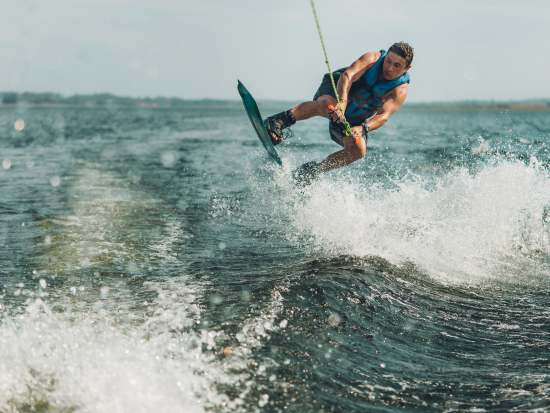 As the summer season continues, and families and friends gather at lakes, oceans and pools, awareness of the potential spinal injuries associated with water sports is crucial to ensuring a safe and enjoyable holiday.
As the summer season continues, and families and friends gather at lakes, oceans and pools, awareness of the potential spinal injuries associated with water sports is crucial to ensuring a safe and enjoyable holiday.
Understanding the spine and spinal injuries
The spine, the backbone of the human anatomy, consists of 26 bone disks known as vertebrae. These vertebrae surround and protect the spinal cord, and provide the flexibility needed for movement. Any injury to the spine or spinal cord can have devastating consequences, like chronic pain or even paralysis.
According to the World Health Organization, more than 15 million people globally live with spinal cord injuries (SCI). Most SCIs result from trauma, such as falls or sports injuries, many of which are preventable through proper safety practices. Aquatic environments pose specific risks, as injuries often occur when the head collides with a hard surface, particularly when diving in shallow water.
Reducing the risk of injury
Assistant Professor Jakub Godzik, M.D., MS, a spine care expert in the University of Alabama at Birmingham Department of Neurosurgery, recommends following safety measures to minimize the risk of spinal injuries while enjoying water sports.  Jakub Godzik, M.D., MS
Jakub Godzik, M.D., MS
"Outdoor water sports are a fun way to enjoy the outdoors and stay active, but they come with inherent risks if not approached cautiously. Understanding and respecting these risks is the first step in preventing needless injuries," says Godzik.
Diving into water without knowing its depth can lead to severe neck and spinal damage from hitting the bottom. Individuals should avoid diving in shallow water and perform a feet-first entry when swimming in a new or unfamiliar environment to assess the depth and check for hidden obstacles.
According to 2019 data from the National Spinal Cord Injury Statistical Center, diving is the fourth leading cause of spinal cord injury for men and the fifth for women. “Checking the depth before diving can be the difference between a fun day out and a life-altering injury,” notes Godzik.
Keeping an eye on water conditions is another crucial step in injury prevention, especially in unpredictable natural environments like rivers and lakes that can have strong currents or hidden debris.
Education about water safety can also significantly reduce the risk of accidents. Understanding the risks associated with water sports and the necessary safety precautions empowers individuals to make safer choices, potentially preventing serious injuries.
“Water sports require skill and knowledge,” says Godzik. “Getting proper training before attempting a new activity can help mitigate injuries by ensuring that everyone involved understands how to avoid potential dangers.”
Excellence in spine care at UAB
In the unfortunate event of a spinal injury, receiving timely and expert care is crucial. UAB is home to one of the nation’s highest-quality spine programs. The program, which is accredited by The Joint Commission’s Advanced Certification in Spine Surgery, offers comprehensive treatment plans and advanced surgical care for spine disorders and injuries.
Spinal neurosurgeons in the Department of Neurosurgery often take a multidisciplinary treatment approach and collaborate with specialists in interventional neuroradiology, physical medicine and rehabilitation, orthopedics and trauma to deliver personalized care to every patient.
“Our team’s commitment to excellence in spine care is second to none. We provide the highest level of care to patients, no matter their condition or type of injury,” says Godzik.
Spinal injuries can be life-altering, but they are often preventable. By following proper water sport safety protocols and understanding the potential risks, individuals can significantly reduce the chances of sustaining a spinal injury while enjoying outdoor activities.